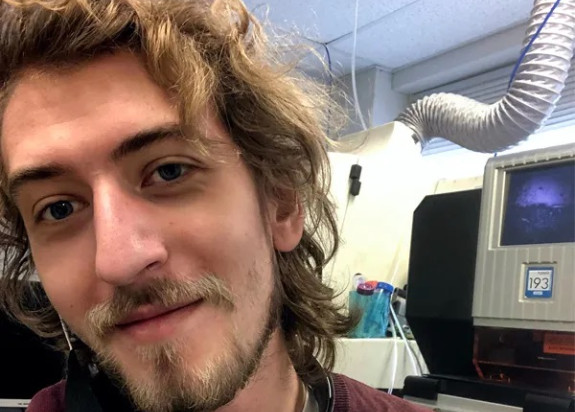Hunga (Tonga) voyage: Meet the team
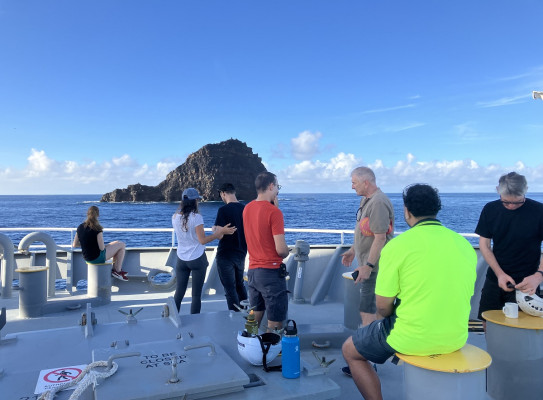
As the voyage to Hunga Tonga approaches its end, learn about those onboard who performed the important research.
Cornel de Ronde has been working in the deep water for about 30 years. His first experience was a dive in the Japanese submersible Shinkai 2000 in the Okinawa Trough. He has since been on ~37 research cruises to study submarine arc volcanoes around the world, including the Kermadec arc, Tonga arc, offshore PNG and the Solomons, the Aeolian arc offshore Sicily, and the spreading ridge of the southern East Pacific Rise. He has adopted various techniques, with colleagues, to survey the volcanoes for their seafloor hydrothermal systems culminating in the IODP drilling of Brothers volcano. Cornel hopes to survey the volcano's morphology, gain insight into the internal architecture of Hunga volcano using various geophysical techniques, and characterise the discharge of hydrothermal fluids into the water column above the volcano.
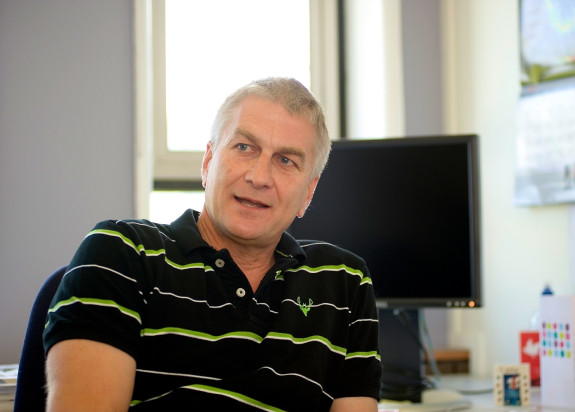
Dan Barker is a marine geophysicist at GNS Science specialising in applying active source seismology to understanding crustal structure and tectonics. His interests on TAN2404 are in using seismic reflection data of the Hunga Tonga volcano to image the sub-seafloor volcanic structure and the eruption history recorded in the surrounding stratigraphy. This imaging will also provide a useful framework and context for interpreting the other multidisciplinary observations and measurements being undertaken on the voyage.
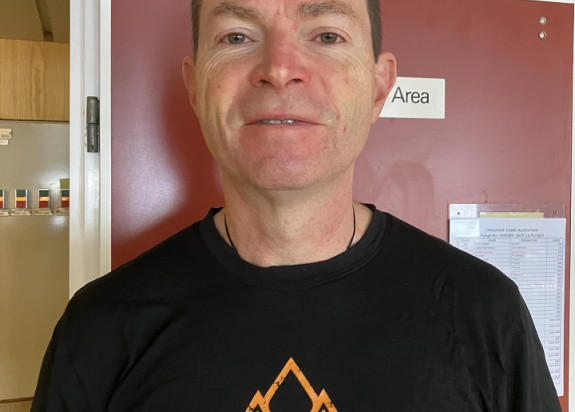
Stuart Henrys is a geophysicist who never tires of interesting science challenges that can be tackled using the seismic imaging toolkit. He says: “I anticipate seismic data collected as part of the HUNGA cruise will reveal exciting CT scan like pictures of the Hunga Volcano to help diagnose the pattern of recent and past eruptions. When he is not at sea or in the back country, you can most likely find him reading science fiction.
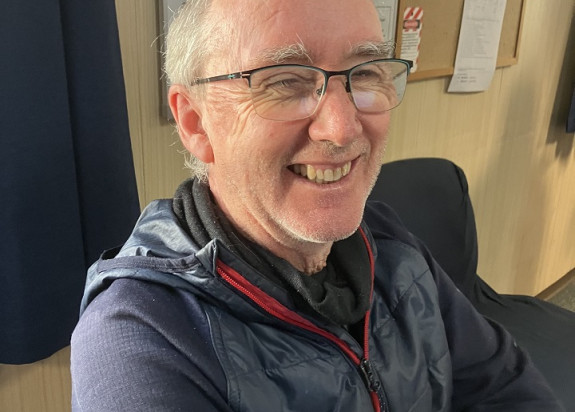
Christof Mueller has dedicated over 15 years to earth science research at GNS Science, specializing in computational geophysics. His work spans marine geoscience, tsunami modelling, seismic data acquisition, and data processing, with a strong focus on algorithm design and implementation. Recently, he has been exploring modern data science methodologies to enhance marine geoscience research. His contributions aim to advance the understanding of marine geological processes through innovative computational approaches. Christof is committed to leveraging technology to uncover new insights in geophysics. On RV Tangaroa, Christof is using sub-bottom profiler data to classify subseafloor structures and properties. "It's like giving the seafloor an ultrasound scan."
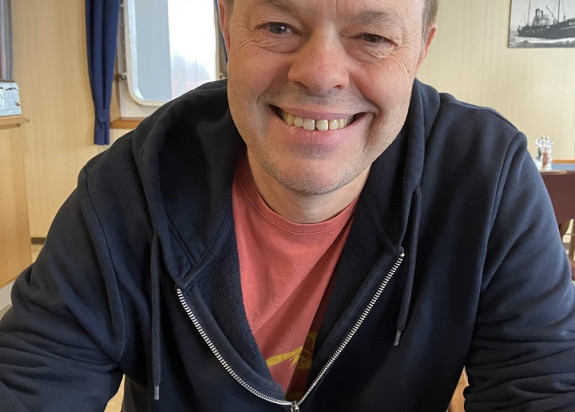
Neville Palmer has been supporting science at GNS since 2003 as a surveyor and instrumentation technician, both on land and at sea. He has been involved in an extensive range of projects from monitoring the tectonic deformation of New Zealand and South Pacific, post-earth quake surveys following the Canterbury and Kaikoura earthquakes, and post-tsunami surveys in Indonesia and Samoa. In recent years he has transitioned from land-based projects to working offshore, developing and deploying seafloor instruments for monitoring deformation of the Hikurangi subduction margin off the east coast of the North Island and supporting the geophysical investigation of New Zealand’s offshore volcanoes. He is excited to be part of the team creating an extensive post-eruption data set of the geophysics and geology of Hunga Tonga-Hunga Ha’apai.
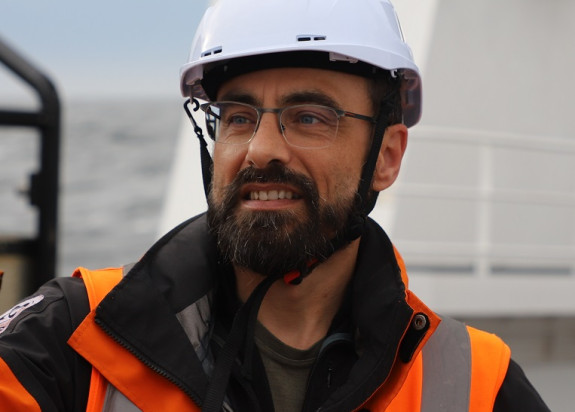
Shane Rooyakkers is a volcanologist at GNS Science. He says: “I have a particular interest in marine volcanism, but this is his first deep-sea research voyage – the first of many, I hope. It’s exciting to be out here at Hunga, and I’m hoping we will recover an interesting suite of rock samples that will give us insights into the history of the volcano and the origin of it’s hyper-explosive 2022 eruption.
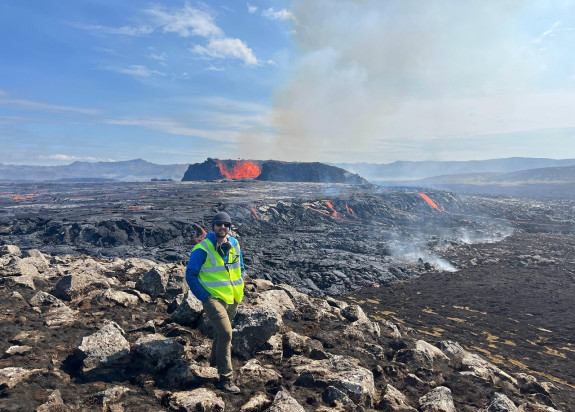
Michael Rosenberg is a geologist with GNS Science, working from the Wairakei Research Centre (Taupo) where he is currently focused on geothermal geology. He also studies ancient volcanic deposits and monitors New Zealand’s active volcanoes. Michael joined the voyage to help unravel the style and history of Hunga volcano’s eruptions by studying rocks and vent deposits dredged from the seafloor.
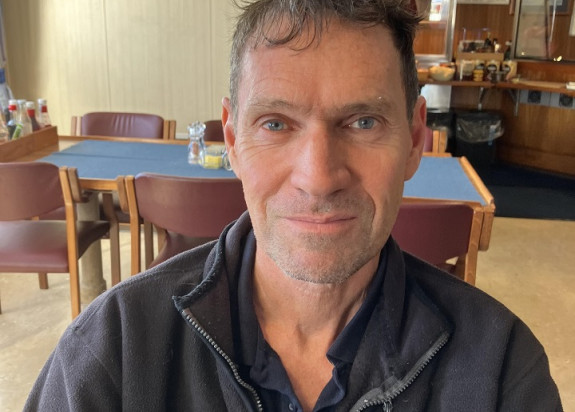
Val Stucker is an analytical geochemist and the Water and Ice Laboratories Manager at GNS Science in Lower Hutt. After completing her Ph.D. in geochemistry at the Colorado School of Mines (USA), she relocated to New Zealand in 2013. Since then, she has been investigating the chemistry and evolution of hydrothermal fluids at submarine volcanoes along the Kermadec arc and sublacustrine lakes in New Zealand. On this voyage, she will be analysing the chemistry of the water column samples to better characterise the plume composition and its sources.
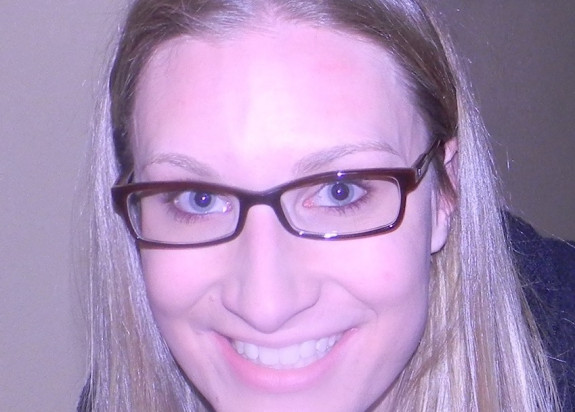
Joali Paredes-Mariño, is a Research Fellow at the University of Auckland, specializing in the analysis of fine particles, particularly volcanic ash, in order to understand explosive volcanic processes. She is a proud Venezuelan, obtained her Geological Engineering degree from Universidad de Los Andes in Mérida in 2010, and her Ph.D. degree at the University of Perugia in Italy in 2018, transitioning from research on fine soils to fine volcanic particles. Joali says: “I am meticulous and passionate about my lab work and I am driven by the desire to learn new things. For the past two years, I have been working with on-land ash deposits that were produced in the Hunga eruption of January 15, 2022. I hope to obtain underwater samples on this cruise from the 2022 eruption and also from the pre-2022 edifice, characterizing and comparing them with the on-land deposits.”
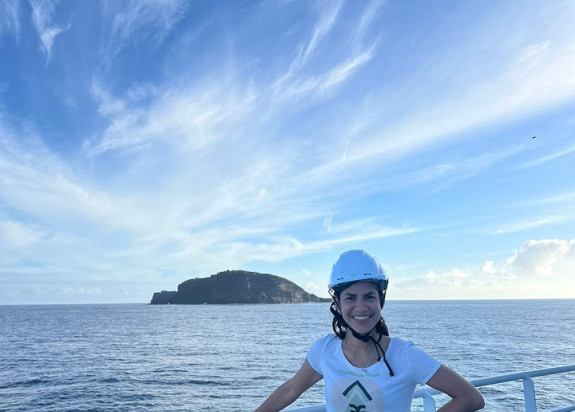
Pupunu Tukuafu works for the Tonga Geological Services. He is a geologist and part-time DJ. He says: "My primary objective in this research campaign is to understand the nature of submarine volcanoes and identify the triggers that caused the Hunga Tonga eruption on January 15th to release such immense force."
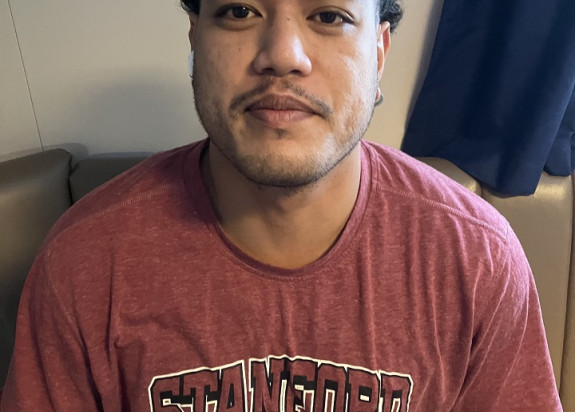
Alessio Bagnasco is a PhD student at Genoa University (Italy). He graduated about two years ago in marine geophysics, focusing on an underwater volcano located along the Kermadec intra-oceanic arc (New Zealand) called Healy. He says: “Thanks to my PhD project, I have the opportunity to continue my studies on these fascinating underwater geological structures, and this year, I am once again on board the research vessel Tangaroa to further my research. I will help with the geophysical data acquisition and the multibeam/backscatter mapping during the cruise. I have already gained some experience in living and working on a research vessel from the expedition near the Whakaari/White Island volcano that I participated in last year. I love hiking and watching the landscape change. I often look for fossils and minerals to increase my collection. I have a weakness for botany and enjoy discovering species I don’t know yet.
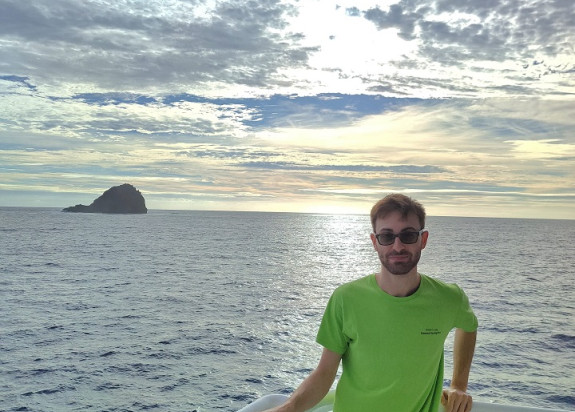
Fabio Caratori Tontini is an Associate Professor of Geophysics at the University of Genova (Italy). After receiving his PhD from the University of Pisa (Italy) in 2003, Fabio joined Istituto Nazionale di Geofisica e Vulcanologia (Italy), and then in 2009 moved to New Zealand to take a Senior Scientist position at GNS Science, before returning to Italy in 2021. His interests involve the investigation of submarine hydrothermal systems and related mineralization in arc and back-arc settings, integrating high-resolution geophysical data from different acquisition platforms, including Autonomous Underwater Vehicles and Remotely Operated Vehicles. He has been on more than 30 cruises on international research vessels, including 5 on the Tangaroa. On this voyage he is developing a gravity and magnetic model of Hunga volcano.
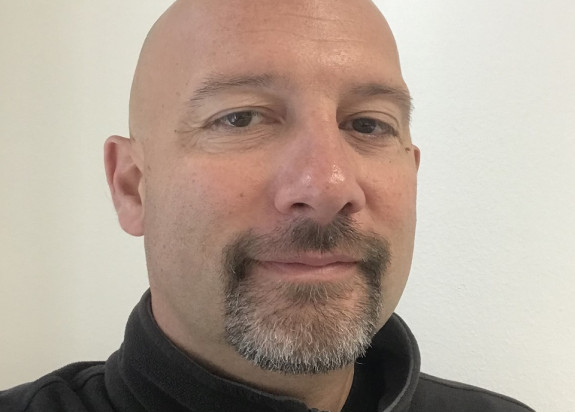
Christian Timm is a staff scientist at the Dynamics of the ocean floor department at GEOMAR in Germany. After receiving his PhD in marine geology from Germany’s largest ocean research institute GEOMAR in 2008, he spent 11 years in New Zealand as staff scientist in the Marine Geoscience department at GNS Science. Since 2023 he has been back at GEOMAR. He says: “My research focusses on submarine volcanoes and uses lava geochemistry to understand processes occurring in the underlying Earth’s mantle and crust. At Hunga Volcano, I hope we will get a fantastic suite of lava samples to be able to study processes occurring at depth beneath the volcano and to better understand the reasons behind the immensely powerful 2022 eruption.”
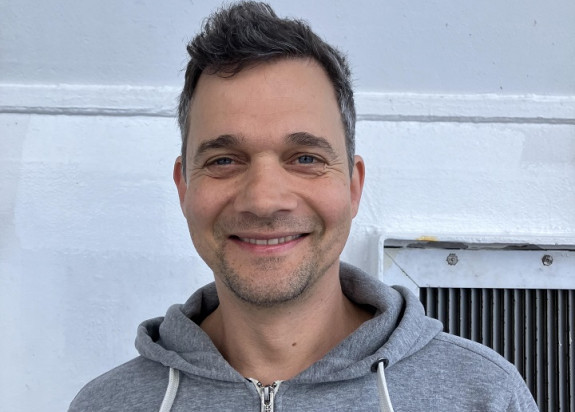
Sam Davidson is a marine geology technician with NIWA, specialising in the use of multibeam echosounders to map the seafloor. Sam is interested in understanding how Hunga volcano has changed since its last eruption, and he is onboard RV Tangaroa to assist with both multibeam and multi-channel seismic operations.
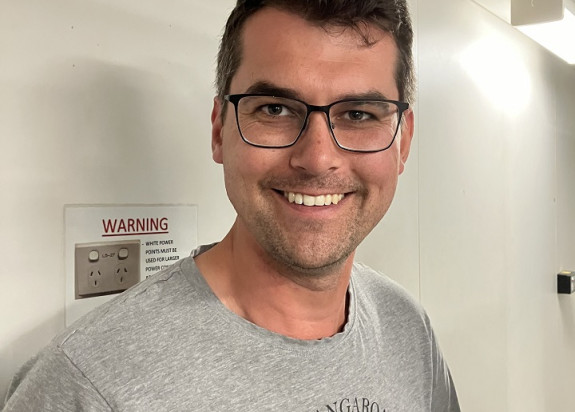
William Quin is a Marine Electronics Engineer employed by NIWA Science. On this voyage he is the lead seismic hardware support team member but also has other responsibilities which include seismic acquisition watchkeeping, multibeam acquisition watchkeeping, technical support for many of the ship acquisition systems, and technical support to the bridge officers. He considers this voyage successful if the scientists are happy with the quality and quantity of the data provided with as little operational downtime as possible.
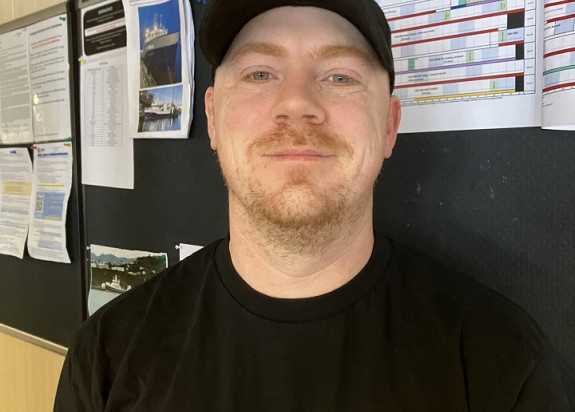
Chris Firth is a volcanologist and petrologist from Queensland University of Technology. Hisinterest in Hunga revolves around what triggered the catastrophic eruption in 2022 and how this eruption fits in with the past history of Hunga volcano as well as wider activity in the Tonga Arc. He hopes to use rocks collected on this voyage to answer these questions.
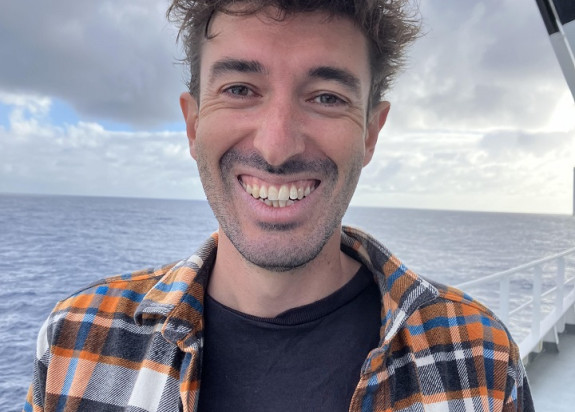
Jonathan Umbsaar is a Canadian PhD student from the University of Toronto, whose research focuses on the geochemistry of hydrothermal sulfide deposits that form in volcanically active seafloor environments. Specifically, Jonathan is interested in exploring the factors that influence metal enrichment and variability within these hydrothermal mineral deposits. Jonathan is keen to acquire rock samples from the Hunga Tonga hydrothermal vent sites in order to best explore the chemistry of these freshly formed samples, and the effects of post-eruption processes on hydrothermal activity.
